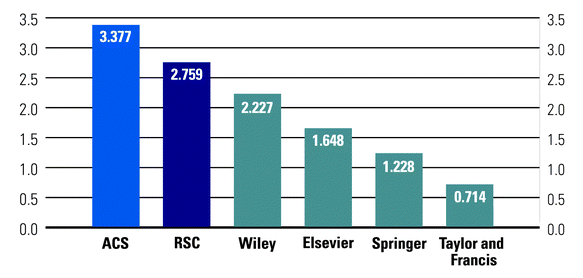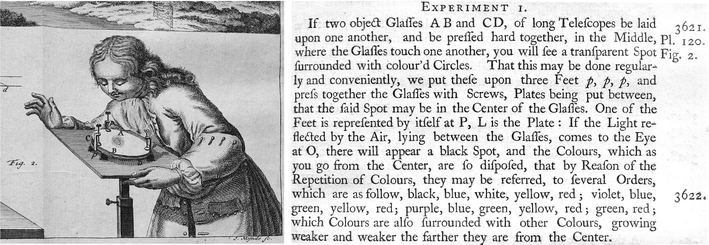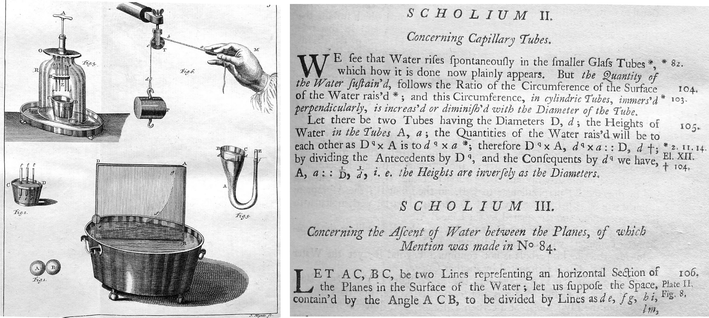Happy New Year from all at Lab on a Chip
Sir Isaac Newton and spaghetti
At a recent congress on micro- and nanofluidics a broad range of exciting molecular and nanoscale engineering developments were presented and discussed. In almost all cases, it was clear that microfabrication provided a bridging interface between the nano- and the millimetre worlds. This signifies an essential element in attempting to make working devices, often dubbed the “world to chip” interface, and is simply reflective of the fact that we humans have to interact with the micro- and/or nanoscale experiment. An evening discussion at the same meeting focused on the relative importance of micro- versus nanotechnologies. Although “nanotechnology” topics currently come with the clear advantage of hype, publicity, grant money and venture capital, many questions remain. Not all “nano” is really nanoscale for example. The more classical micro domain not only remains very interesting but still offers a huge variety of opportunities and the advantage of an easier world-to-chip interface, and therefore (hopefully) a faster time to market.The recent hype about nanotechnology should not be allowed to distract us from the fact that Sir Isaac Newton described nanoscale phenomena, the so-called Newtons Rings way back in 1747.1
He also very clearly formulated experiments in microfluidics by describing capillary flow between parallel glass plates. Therefore, it is apparent that, at least in concept, neither nano- nor micro- are really very novel, it seems!
It is also clear that there are still a number of important problems at the macroscale that require resolution; for example, the classical “breaking spaghetti” experiment. (If dry spaghetti is slowly bent it will eventually break—surprisingly it will not break into two but three or more pieces!) Only recently this problem has been approached again.2
We are extremely happy that Lab on a Chip is not affected by either the hype or boredom surrounding these subject areas. Publications in the journal cover miniaturisation research on all scales and describe experimental results that excite everyone from end users to the front-end micro/nanofabrication engineers. Lab on a Chip has just completed its fifth year of existence, its first year of monthly issues, and colour, photo-based front covers. We are extremely proud of the journal's high impact factor (5.04) and even more so of its distinguished authors and readers around the globe. Almost a hundred per cent of the relevant research groups worldwide have published their original work in the journal and many have reviewed material and helped us to maintain the extremely high standard of publication we have gained a reputation for—thank you all!
Technology advances rapidly at the RSC
In 2005 we saw RSC Publishing invest significantly in technological developments across all of its products. First there was the introduction of the new website in the summer which included a contemporary, fresh look and an enhanced structure for improved and intuitive navigation between relevant, associated content. The improvements to the technological infrastructure have made the site more flexible and efficient, and better equip the RSC to deliver enhanced publishing products and services for its customers in the future. The new look was just the start and towards the end of the year we were pleased to provide further enhancements in the form of RSS feeds and ‘forward linking’ facilities.RSS feeds
RSS, or ‘really simple syndication’, is the latest way to keep up with the research published by the RSC. The new service provides subscribers with alerts as soon as an Advance Article is published in their journal of choice. Journal readers simply need to go to the journal homepage, click on the RSS link, and follow the step-by-step instructions to register for these enhanced alerts. RSS feeds include both the graphical abstract and text from a journal's contents page – i.e. they deliver access to new research straight to a readers PC, as soon as it is published! Many feed reader software packages also have the added benefit of remembering what has been read previously, which in turn makes tracking and managing journal browsing more efficient.‘Forward linking’, the reverse of reference linking, enables readers to link from any RSC published paper to the articles in which it is cited. In essence, it allows researchers to easily track the progression of a concept or discovery, since its original publication. With one click of a button (on the ‘search for citing articles’ link) a list of citing articles included in Cross-Ref is presented, complete with DOI links.
At a time when research is becoming increasingly interdisciplinary in nature and the amount of published works continues to grow, it is hoped that the new technology, developed in conjunction with Cross-Ref, will significantly reduce the time spent by researchers searching for information.
These developments demonstrate the investment in publishing products and services over the past year and 2006 will see us enhancing our products further, with improvements to the HTML functionality of all journals and ReSourCe (the author and referee web interface) already underway.
The 2004 impact factors, released by ISI® in June 2005, showed an impressive average increase of over 10% for RSC Journals. Lab on a Chip increased from 4.3 to 5.04, an increase of 17%.
 | ||
| Fig. 1 Median impact factor in seven ISI core chemistry categories. | ||
Calculated annually, ISI® impact factors provide an indication of the quality of a journal—they take into account the number of citations in a given year for all the citeable documents published within a journal in the preceding two years. It is worth noting that alongside the ACS Publications, journals from RSC Publishing have the highest median impact factor among publishers in the chemical sciences (see Fig. 1). This encouraging statistic demonstrates the recognition and status that researchers place in society published work.
Following successful launches in 2005, the two new RSC journals Soft Matter and Molecular BioSystems, continue to thrive. Molecular BioSystems, is devoted to publishing the best work in chemical biology with a particular focus on the interface between chemistry and the –omic sciences and systems biology, whilst Soft Matter provides a forum for the communication of generic science underpinning the properties and applications of soft matter. Both have already seen many top authors from prestigious organisations around the world submit articles. Both journals have been very well-received in the community—and subscribers to Lab on a Chip in 2006 will continue to receive free (online) access to these exciting new additions to the RSC portfolio.
Chemical biology content published in this journal is highlighted in the Chemical Biology Virtual Journal. The portal, which was launched in 2002 in recognition of the significant amount of chemical biology material published across RSC journals, enables interested readers to readily access relevant items. All chemical biology articles and related papers published in RSC journals are drawn together online every two weeks, with a selection of the primary literature free to access for a month.
Not just journals…
As well as an impressive portfolio of prestigious journals, the RSC has a significant collection of book titles. The first titles in three new series: RSC Biomolecular Sciences; RSC Nanoscience & Nanotechnology Series; and Issues in Toxicology were published in 2005, with further titles due during 2006. Future growth in the books publishing programme is planned, which reflects the increasingly interdisciplinary nature of the chemical sciences.Andreas Manz
Harpal Minhas
References
- W. James Gravesande FRS (Latin, English translation by J. T. Desaguliers), Mathematical elements of natural philosophy confirm'd by experiments: or, an introduction to Sir Isaac Newton's philosophy, 6th edn, printed for W. Innys, T. Longman, T. Shewell and C. Hitch, London, 1747.
- B. Audoly and S. Neukirch, Fragmentation of brittle rods: why spaghetti do not break in half, Phys. Rev. Lett., 2005, 95 DOI:10.1103/PhysRevLett.95.095505.
| This journal is © The Royal Society of Chemistry 2006 |


